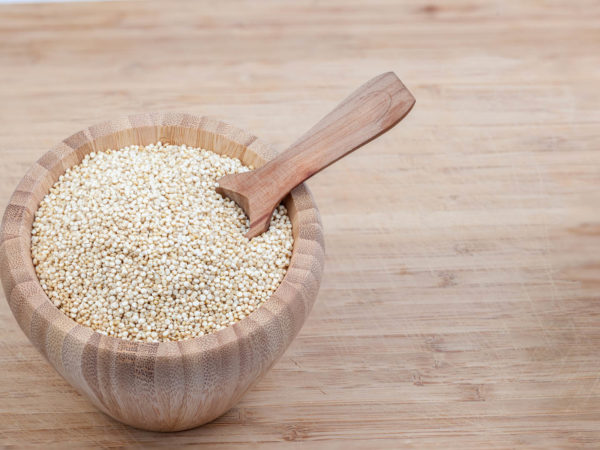
If you’ve walked down the health food aisle of any supermarket lately, you’ve probably seen teff, or its ground-down cousin, teff flour. Teff is the latest “superfood” to hit American food shelves and thanks to its nutrition profile, it has caught the attention of one health-conscious group in particular: runners.

Contrary to what Americans might think, teff is not new. It has been a staple for centuries in Ethiopia, where it’s often made into that delicious sourdough flatbread called injera, which is common in Ethiopian restaurants. It also happens to be the main component of the diets of many of Ethiopia’s running elite, including Haile Gebrselassie, marathon world record holder; Kenenisa Bekele, 10,000-meter world record holder; and Tirunesh Dibaba, outdoor 5,000-meter world record holder.
Here’s what runner-chef Elyse Kopecky and four-time Olympic runner Shalane Flanagan had to say about teff in the cookbook they co-authored, “Run Fast Eat Slow: Nourishing Recipes for Athletes.”
“We snooped around to see what Shalane’s competition eats and discovered the nutritional powerhouse that is teff. An ancient East African cereal grass, teff has been a staple of Ethiopian cuisine for thousands of years. With all of the running prowess coming out of Ethiopia, we couldn’t help but explore the magic of this tiny grain.”
Tiny grain, big nutrition
:max_bytes(150000):strip_icc():format(webp)/__opt__aboutcom__coeus__resources__content_migration__mnn__images__2017__06__teff-105408052bc242409f8c50b776ff6bad.jpg)
What makes teff such a nutritional powerhouse? This poppy-seed-like grain is high in protein, fiber, calcium, magnesium, iron, zinc and vitamin B6. It contains high levels of lysine, the amino acid that our bodies use to build and maintain muscle tissue. It’s gluten-free and easily digestible, so it’s good for people who have Celiac disease or other digestive conditions. And it has a low glycemic index, so it’s a good choice for diabetics or others who need to closely regulate their blood sugar levels.
So, yeah, teff has a lot going for it, and it doesn’t hurt that it tastes great and can be used in a wide variety of sweet and savory dishes.
Hits and misses
I had heard a lot about teff within my running crowd and decided to give it a try. I made teff porridge, teff pancakes and teff peanut butter cookies and got mixed reviews from my family. My eldest daughter and I both loved the teff porridge. Its unique, sweet and nutty flavor broke up the monotony of my usual morning oatmeal. My youngest daughter was not impressed with the teff pancakes, deeming them a poor replacement for the fluffy white variety. But she did love the teff cookies (which are nothing but teff, peanut butter, maple syrup and coconut oil,) so that’s a big win. Getting my pre-teen to eat a cookie loaded with protein, calcium, vitamins and iron and consider it dessert? I’ll definitely be making more of those.
But the big question is, has all of this teff made me a better runner? I have been eating teff semi-regularly for about two weeks now, and I will say that I feel a bit stronger when I run. Maybe it’s psychological, or maybe it’s the iron — a nutrient I don’t often get enough of. Teff also leaves me feeling fuller for a longer period than my traditional bowl of oatmeal.
Did teff magically turn me into the next Shalane Flanagan? Nope. But it did give my diet a nutritional boost and introduce me to some great new recipes.
Will someone please pass the (teff) cookies?



